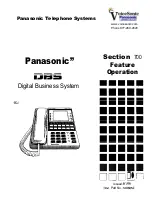
Product name: Lithium Ion Battery Cell
Reference number: SDS-IBT-00010
Establishment / Revision: Dec.1 2008
5/5
13. DISPOSAL CONSIDERATIONS
!
Recommended methods for safe and environmentally preferred disposal:
Product (waste from residues)
Do not throw out a used battery cell. Recycle it through the recycling company.
Contaminated packaging
Neither a container nor packing is contaminated during normal use. When internal materials leaked
from a battery cell contaminates, dispose as industrial wastes subject to special control.
14. TRANSPORT INFORMATION
In the case of transportation, avoid exposure to high temperature and prevent the formation of any
condensation. Take in a cargo of them without falling, dropping and breakage. Prevent collapse of cargo piles
and wet by rain. The container must be handled carefully. Do not give shocks that result in a mark of hitting on
a cell. Please refer to Section 7-HANDLING AND STORAGE also.
!
UN classification: However this product's shipping name is "Lithium ion batteries" (or "Lithium ion Batteries
packed with equipment" or "Lithium ion Batteries contained in equipment"), it is not recognized as
"DANGEROUS GOODS" when its transport condition accords with “packing instruction 965 part 1 of IATA-
DGR" (or "packing instruction 966 part 1" or "packing instruction 967 part 1") or "special provision 188 of
IMO-IMDG Code".
15. REGULATORY INFORMATION
!
Regulations specifically applicable to the product:
IATA-DGR (air transportation)
IMO-IMDG Code (sea transportation)
US Department of Transportation 49 Code of Federal Regulations [USA]
Wastes Disposal and Public Cleaning Law [Japan]
Law for Promotion of Effective Utilization of resources [Japan]
16. OTHER INFORMATION
!
The information contained in this Safety data sheet is based on the present state of knowledge and
current legislation.
!
This safety data sheet provides guidance on health, safety and environmental aspects of the product and
should not be construed as any guarantee of technical performance or suitability for particular
applications.
!
Reference
Chemical substances information: Japan Advanced Information center of Safety and Health
International Chemical Safety Cards (ICSCs): International Occupational Safety and Health Information
Centre (CIS)
2002 TLVs and BEIs: American Conference of Governmental Industrial Hygienists (ACGIH)
Dangerous Goods Regulations - 50th Edition Effective 1 January 2009: International Air Transport
Association (IATA)
IMDG Code - 2008 Edition: International Maritime Organization (IMO)
RTECS (CD-ROM)
MSDS of raw materials prepared by the manufactures
First edition:
Dec. 01 2003
Prepared and approved by
Sanyo Electric Co., Ltd.
Mobile Energy Company
Battery System Development Management Department























